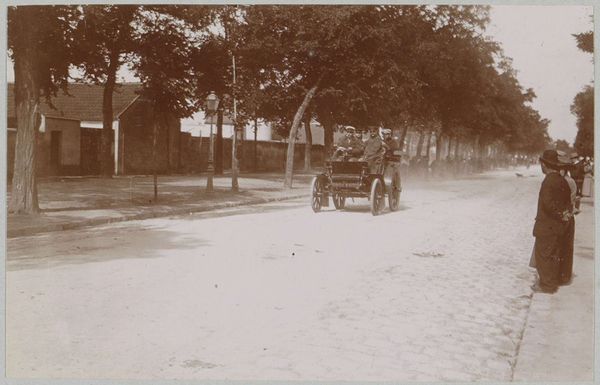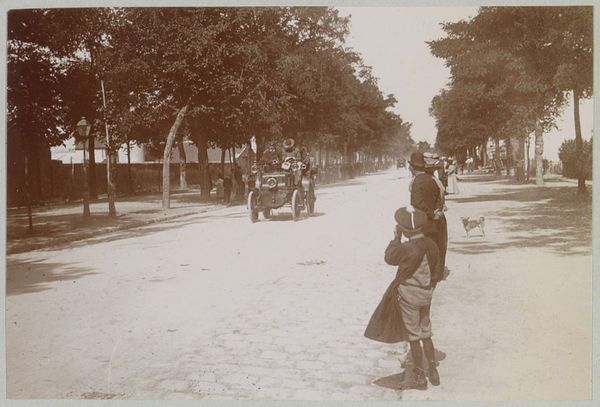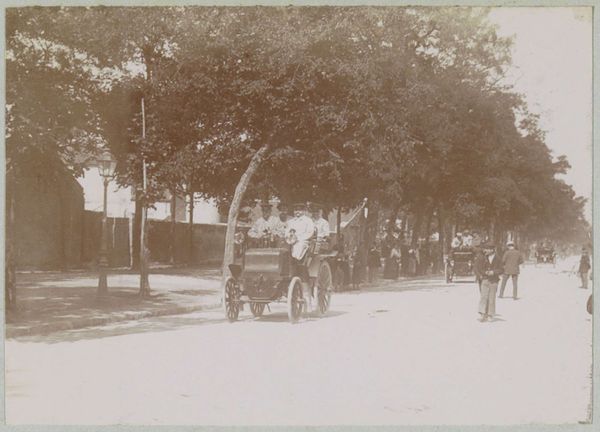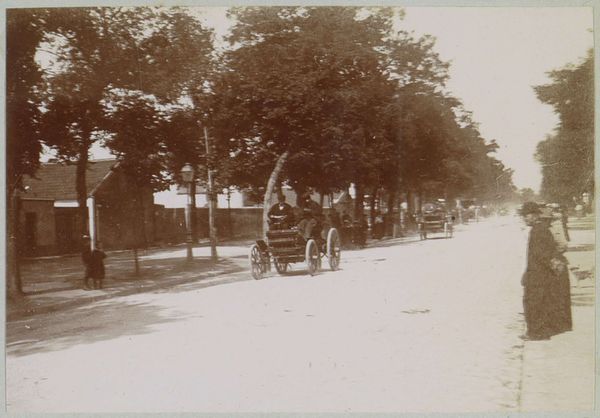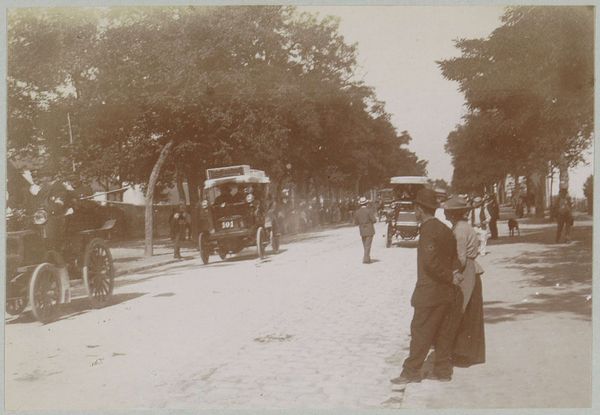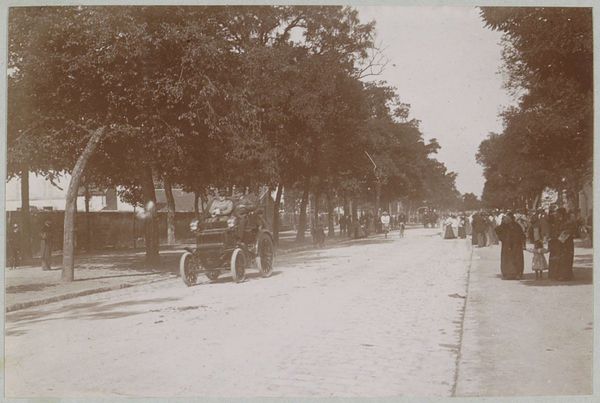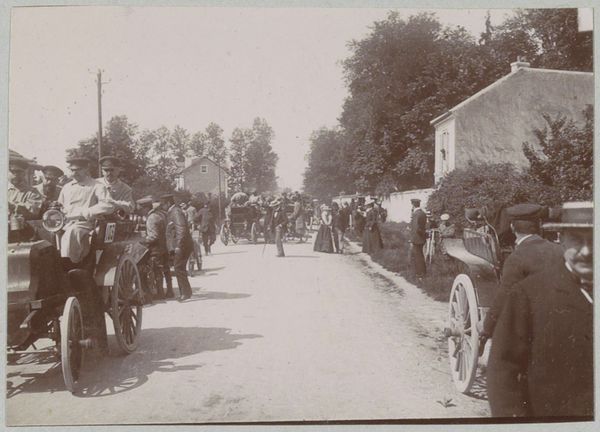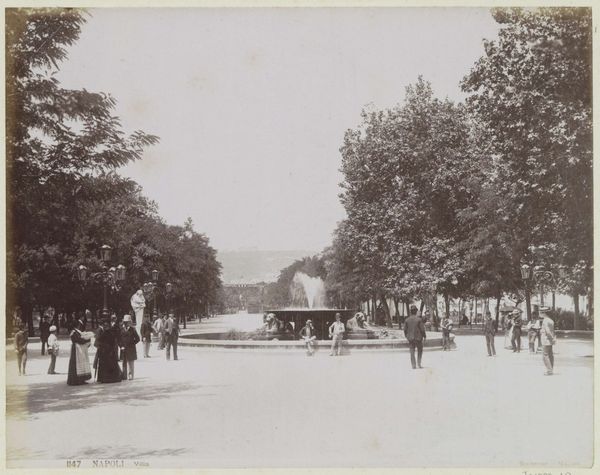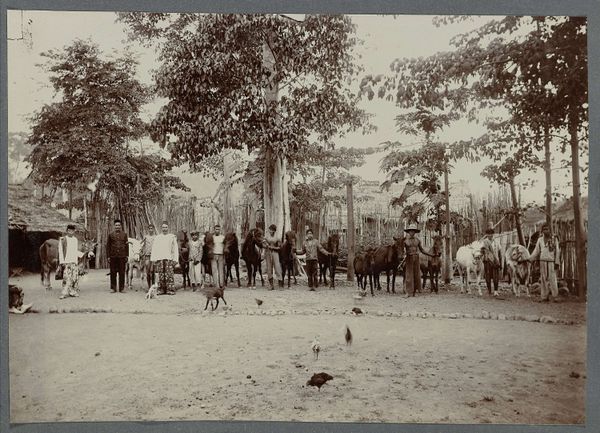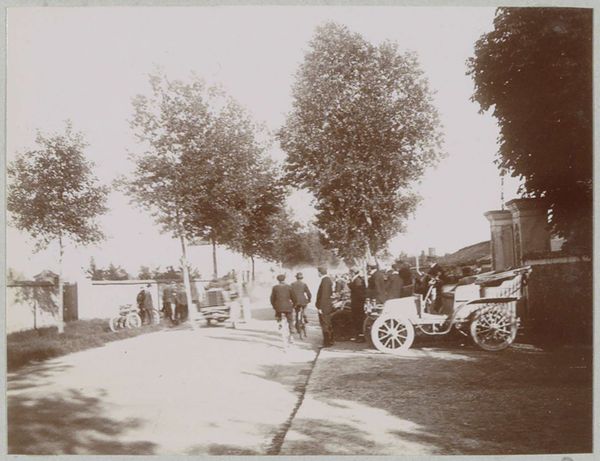
plein-air, photography
#
plein-air
#
landscape
#
outdoor photograph
#
street-photography
#
photography
#
historical photography
#
cityscape
Dimensions: height 115 mm, width 165 mm
Copyright: Rijks Museum: Open Domain
Curator: Welcome. Here we have a fascinating piece from the Rijksmuseum's collection, possibly dating back to 1898: a photograph titled "Start van de race Parijs-Amsterdam voor automobielen," capturing the start of the Paris-Amsterdam automobile race. Editor: My initial impression is one of starkness, actually. The photo feels very matter-of-fact in its recording of this spectacle. There's not a sense of great excitement that one might expect. I’m drawn to the stillness captured; you can almost hear the quiet anticipation. Curator: It's fascinating how photography, even then, served as a tool to document and legitimize these nascent forms of technology and leisure. Look at the composition; the trees almost act as a frame, containing the event within a very ordered, almost bourgeois space. This was very much a spectacle of the wealthy elite. Editor: Exactly, and the dust of the road under those automobiles would kick up onto the finely dressed spectators lining the route. We see a world caught in transition, right? Horse-drawn carriages giving way to these new mechanized forms. One is reminded about the labour required to maintain these new status symbols and all those cobblestones... Curator: Precisely! The placement of spectators is key; it reflects the social hierarchies of the time. They are clearly delineating public and private space, defining who is ‘allowed’ to be part of this groundbreaking moment in mobility, who are consumers, and the producers behind these machines. The race itself promoted a specific image of progress, technology, and national identity. Editor: You know, considering the primitive state of photography at the time, I'm really impressed by the clarity in the image, like how those racing cars are sharp amidst this static frame. It serves a function. It focuses our attention not so much on human endeavor or the thrill of competition but mostly on those very well crafted automobiles. Curator: I agree. We see how technological advancement was displayed to shape public opinion. The photograph serves as propaganda—in its truest sense, conveying specific ideologies related to speed, modernity, and ultimately, power. Editor: Looking closer, you see this strange relationship between hand-craftsmanship and nascent industrialism right there. Everything from those cars with the early combustion engine technology down to the hats those spectators are sporting shows a really fascinating array of skills and artistry. Curator: It speaks to the layers of craftsmanship required for this moment to even occur, which is not lost to time given its display. The photograph reminds us to scrutinize the narratives behind progress, especially as displayed through our contemporary societal infrastructure and museum gallery spaces alike. Editor: Ultimately, looking closely, it asks us to contemplate the nature of technological advance—whose progress is it and how many hands it requires, directly or indirectly. Thanks for helping contextualize this image!
Comments
No comments
Be the first to comment and join the conversation on the ultimate creative platform.
